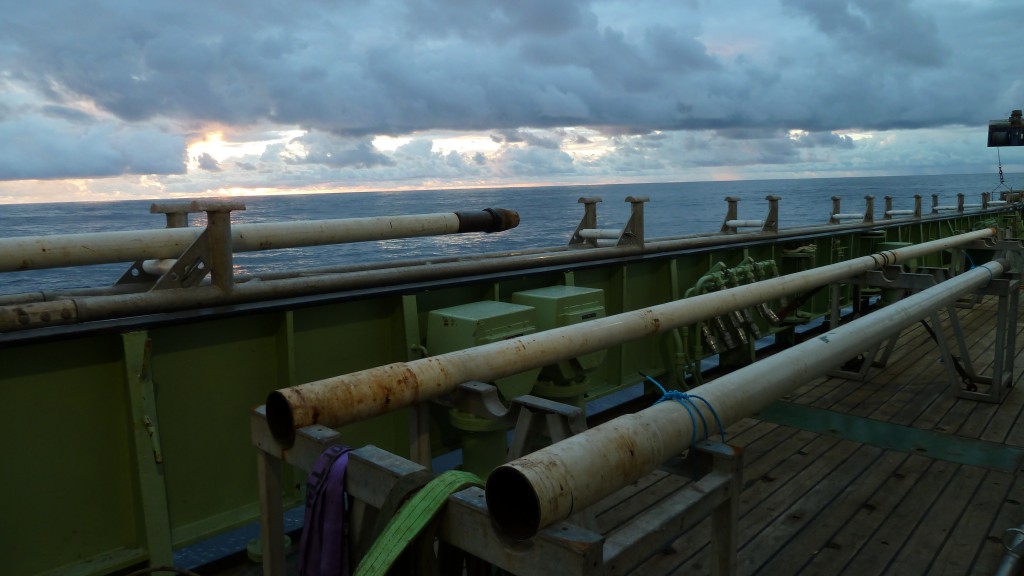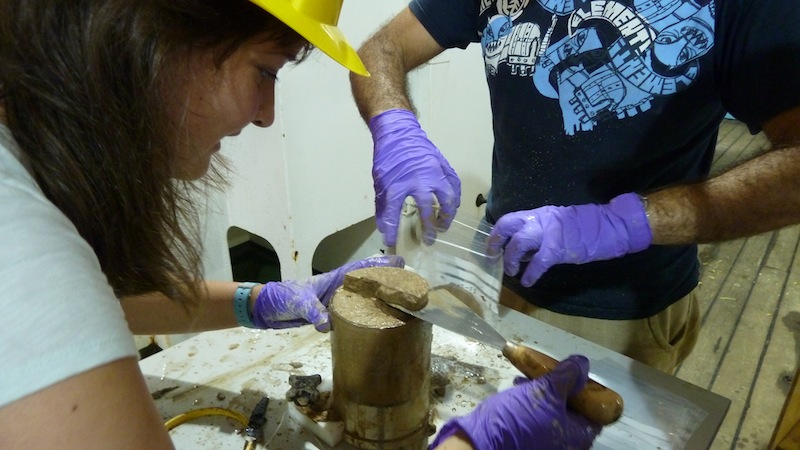October 31: Deep Sea Sediment Cores
We have started collecting our first few cores from the deep ocean! Marine sediment cores are like ice cores, but instead of ice they are made of sediments from the sea floor. The sediments build up in successive layers over time, so scientists can use them to study how oceanic conditions changed through the past.
A hand-held colour scanner is used to measure the colour of the sediments. This allows us to plot graphs of the core’s luminosity and colour. These data can reveal changes in conditions under the sea (e.g. calcium carbonate content, dust inputs, diagenesis and anoxia).
A core description is written, detailing any features such as mottling or bands. The different colours of the sediments are described with the help of a Munsell colour chart.
We also have a megacorer on board, which can collect up to 12 smaller-sized sediment cores at a time. The cores are housed in a metal framework which protects the cores allowing the sediment-water interface to be well-preserved. The water overlying the sediments can be collected for measurement. Some of the cores have little holes down the sides, which allow pore waters to be collected from inside the sediments.
How do we know the ages of these sediments? There are several different techniques that can be used to date sediment cores. On our cruise we are using biostratigraphy to estimate the age of our sediment cores; see ‘Foram Biostratigraphy’ in the ‘Lab’ section for more information about this technique.
For my PhD project I’m studying foraminifera, single-celled animals that make tiny shells which can be measured to reveal ocean chemistry. The foraminifera are taken from marine sediment cores, so it was fantastic to be able to observe the coring process to see how my samples would have been collected. I wonder what work will be done on our cores in the future, and what they might reveal?
Blog Written By: Stephanie Bates


